Today was to be our last day in Kraków and we planned
to be out of the apartment the whole day, basically seeing as much as we could
of this fine old city.
We didn’t have the earliest of starts and it was nearer
midday than anything before we were actually in the sightseeing areas. Now we
had agreed that we wanted to participate in another one of the ‘free’ tours,
run by the same organization that we’d used in Poznań and as it turned out, our
guide was also called Maciej. This tour and presentation was on the Jewish area
and Jewish history and it started at 14:00, so we didn’t have a whole lot of
spare time. As it was a pretty considerable walk from our apartment to
Kazimierz, the proper name of the Jewish quarter , we decided that we needed a
sit-down and a coffee but first of all an ice cream. The ‘Lody’ brand proved to
be excellent, some of the nicest ice cream we’d ever had and we’ll definitely
be having some more when we get to Warsaw (already checked that it’s sold
there!). We had coffee in the area known as ‘Broadway’, close to the Old
Synagogue and later had a simple cheese and salad roll in a café opposite.
By the time 14:00 came around, there was a sizeable
group waiting for Maciej to start.
This talk was to be about the history of the
Jewish people who had lived here in Kazimierz for 900 years and not a history
of the horrible events of just a few short years in the 1940’s. Of course the
Holocaust could not be avoided, as it effectively removed virtually all of the
60,000+ residents, with only a tiny proportion surviving the gas chambers to
return after the war.
The original Jewish citizens didn’t actually reside in
Kazimierz, rather they lived within the protection of the castle walls in the
area known as Wawel. The reason for this is that the ruling classes needed
advisers and rather than use them from their own community, they chose to
utilise the services of someone who was on the outside. The rationale behind
this was that any advisers on the inside could be subject to influences such as
bribery, blackmail, their own or their families’ vested interests and so on
whereas someone not of your community would be immune from these pressures. The
services required were things like legal advice, medical assistance and access
to money and this is the primary reason that the Jewish communities everywhere specialized in the provision of
these services.
Through time and the growth of the population, the Jews settled
in the area outside Kraków known as Kazimierz and it was here that the
community flourished. Of course there were periodic pogroms and influxes of
people from elsewhere, survivors of persecutions in their own countries but
they could be assimilated quickly as they all had one thing in common, a
language ie Yiddish, essentially a language based on Medieval German and with a
sprinkling of words from many other sources such as Hebrew, Slavic and Aramaic
and Romance languages.
I can’t effectively recap all that Maciej said in his
fascinating two and a quarter hours tour. He was an excellent presenter, very
lively and informative and we all enjoyed it very much. One point that must be
made was the influence of one Stephen Spielberg on Kazimierz or perhaps more
fairly, the influence of that very brave man Oscar Schindler and the book ‘Schindler’s Ark’ that documented his unstinting efforts
to save as many people as possible from the scourges of the Nazis.
When
Spielberg came here to film Schindler’s List, the whole area was basically a
run- down slum but with the extraordinary success of that film and the rise of
‘Hollywood Tourism’ the area benefitted enormously and reconstruction and
repair programmes started. What is really sad to relate is that the survivors
of the Holocaust, many of them thanks to Schindler, did not successfully recolonize
Kazimierz. The 3000 or so people tried to do so but once again, they were
discriminated against by the communist powers and they virtually all left to
live elsewhere, principally Israel and the USA. Today there are only 140
Orthodox Jews living here, a staggering thought.
Here are a couple of paragraphs that I’ve ‘borrowed’
from a web site :-
The history of Kazimierz
can be traced back to 1335 when it was officially founded on an island outside
of Kraków by King Kazimierz the Great. It was not until 1495 when Jews began to
be expelled from Kraków that they started to move over the river to Kazimierz
en masse.
Awarded its Magdeburg Rights, which allowed markets to be held on
what is now Plac Wolnica, Kazimierz prospered and became one
of the most influential Polish towns during the Middle Ages. By the 17th
century Jewish life was flourishing and numerous synagogues had been
constructed when the plague hit in 1651. Four years later Kazimierz was
ransacked by Swedish invaders, famine, floods and anti-Jewish riots followed in
quick succession, and a mass migration to Warsaw
began, leaving the once vibrant Kazimierz a shadow of its former self.
In 1796 Kraków came under Austrian control, and four years later Kazimierz was incorporated into its neighbouring city. Ironically this would bring about the area's rebirth as the Austrians worked hard to redevelop the city: the streets were cobbled, the crumbling defensive walls were torn down, the first gas lamps were illuminated in 1857, and the suburb had a power station by 1905. The governing Austrians also ordered all of Kraków’s Jews to resettle in Kazimierz, and a rich cultural life arose around them; by 1910 the Jewish population stood at 32,000, a figure that was to nearly double during the inter-war years. This, as we know, would come to a dramatic end with the Nazi occupation of Kraków and Hitler’s systematic extermination of the Jews of Europe. Herded across the river to a ghetto in Podgórze, Kraków’s Jews met their end there, in Płaszów, or Bełżec (primarily). A mere 3-5,000 survived the Holocaust, a large proportion of them saved by Oskar Schindler.
Although 5,000 Jews were registered as living in Kraków in 1950, any hopes of rekindling the past soon vanished. The anti-Zionist policies of the post-war communist authorities sparked waves of emigration to Israel, and by the 1970s signs of Jewish life had all but disappeared and the area had become a bandit suburb. The fall of communism in 1989 sparked new hope, however; investment began trickling in, 1988 saw the first Jewish Festival take place, and five years later the Judaica Foundation was opened. That was also the year Spielberg arrived to film Schindler’s List, a film that would put Kazimierz on the world map and irrevocably change its fortunes. Today a visit to Kazimierz ranks just as high on itineraries as a trip to Wawel, illustrating the historical importance and public regard the area possesses.
In 1796 Kraków came under Austrian control, and four years later Kazimierz was incorporated into its neighbouring city. Ironically this would bring about the area's rebirth as the Austrians worked hard to redevelop the city: the streets were cobbled, the crumbling defensive walls were torn down, the first gas lamps were illuminated in 1857, and the suburb had a power station by 1905. The governing Austrians also ordered all of Kraków’s Jews to resettle in Kazimierz, and a rich cultural life arose around them; by 1910 the Jewish population stood at 32,000, a figure that was to nearly double during the inter-war years. This, as we know, would come to a dramatic end with the Nazi occupation of Kraków and Hitler’s systematic extermination of the Jews of Europe. Herded across the river to a ghetto in Podgórze, Kraków’s Jews met their end there, in Płaszów, or Bełżec (primarily). A mere 3-5,000 survived the Holocaust, a large proportion of them saved by Oskar Schindler.
Although 5,000 Jews were registered as living in Kraków in 1950, any hopes of rekindling the past soon vanished. The anti-Zionist policies of the post-war communist authorities sparked waves of emigration to Israel, and by the 1970s signs of Jewish life had all but disappeared and the area had become a bandit suburb. The fall of communism in 1989 sparked new hope, however; investment began trickling in, 1988 saw the first Jewish Festival take place, and five years later the Judaica Foundation was opened. That was also the year Spielberg arrived to film Schindler’s List, a film that would put Kazimierz on the world map and irrevocably change its fortunes. Today a visit to Kazimierz ranks just as high on itineraries as a trip to Wawel, illustrating the historical importance and public regard the area possesses.
Maciej’s talk was over by 16:20, which left us a
couple of hours only to have a quick look at the castle and grounds of Wawel.
The trouble is, with the heat and effort of standing and walking, we were in
dire need of refreshment so that became our priority and we found a suitable
café within the castle grounds and adjacent to the Tourist Office. It took a
while to consume the best part of ¾ litre of lemonade (lemons crushed in water)
and a bottle of water so the only time we had left before the witching hour of
18:00 (beer o’clock) was used up looking and marvelling at the exterior of the
castle and churches of Wawel and in walking back to the main square of Kraków,
where we had another excellent meal (me Pizza Diavola (ie with Jalapeño chillis), Julie &
Rosemary duck breast and for starters Julie and I shared a plate of diverse
Italian preserved meat, olives etc(ie Antipasto) and Rosemary had beef
carpaccio. All in all, a nice way to end our 4 nights here in Kraków, an
intriguing city that we feel we’ve only just touched the surface of.

 Kraków, Lesser Poland Voivodeship, Poland
Kraków, Lesser Poland Voivodeship, Poland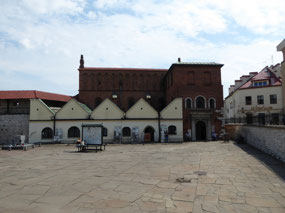
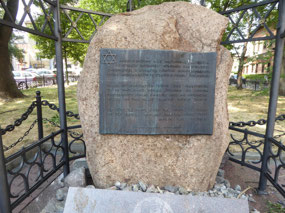
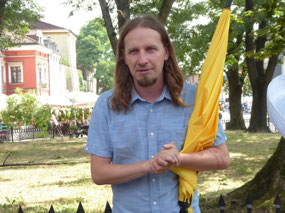
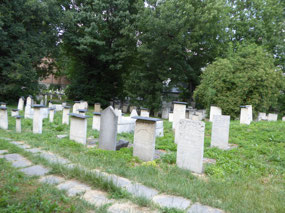
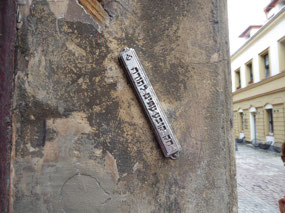
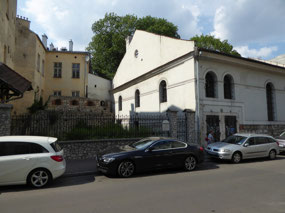
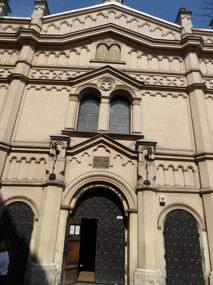


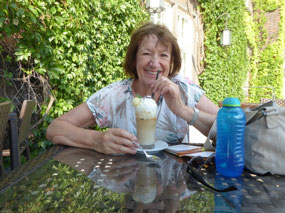
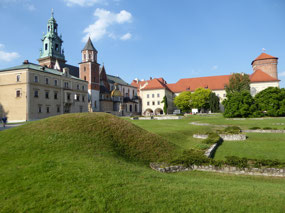
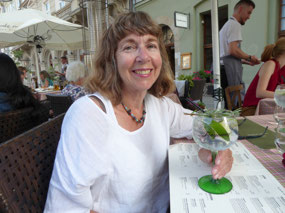
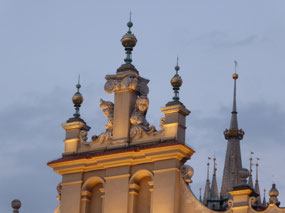
2025-05-23